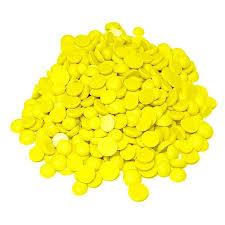Sulfur pastilles are solid, spherical pellets of elemental sulfur used in various industrial applications, including agriculture, chemical processing, and metallurgy. They provide a convenient and efficient form of sulfur for use as a nutrient, fungicide, or chemical feedstock.
The Sulfur Pastilles Market size was USD 1.4 billion in 2023 and is projected to reach USD 1.6 billion by 2028 at a CAGR of 3.2% between 2023 and 2028.
Market Overview:
- Steady Demand: The sulfur pastilles market experiences steady demand globally, driven by the widespread use of sulfur in agricultural fertilizers, chemical manufacturing, and industrial processes.
- Key Applications: Sulfur pastilles find applications in agricultural sulfur fertilizers, sulphuric acid production, metal ore processing, and rubber vulcanization, among others.
- Market Dynamics: Factors such as agricultural practices, industrial demand, sulfur availability, and regulatory policies influencing market growth and trends in sulfur pastilles.
Download PDF Brochure: https://www.marketsandmarkets.com/pdfdownloadNew.asp?id=188630778
Key Market Drivers:
- Agricultural Demand: The agricultural sector is a major driver of the sulfur pastilles market, with sulfur being an essential nutrient for crop growth and soil health. Sulfur pastilles are used in sulfur-containing fertilizers to address sulfur deficiencies in soil and enhance crop yields.
- Chemical Processing: Sulfur pastilles serve as a key raw material in the production of sulphuric acid, which is widely used in chemical manufacturing, mining, metallurgy, and other industrial processes. The demand for sulphuric acid drives the demand for sulfur pastilles as a feedstock.
- Environmental Regulations: Regulatory policies promoting sulfur use in agriculture, such as sulfur fertilization programs and sulfur emission regulations, influencing market demand for sulfur pastilles and sulfur-containing products to meet environmental standards.
Market Challenges:
- Sulfur Sourcing: Challenges in sulfur sourcing and availability, particularly from traditional sources such as sulfur mines and oil and gas processing, may impact the supply chain and pricing of sulfur pastilles, affecting market stability and competitiveness.
- Competitive Alternatives: Competition from alternative sulfur sources, such as liquid sulfur fertilizers, sulfur granules, and micronized sulfur formulations, poses challenges for sulfur pastilles manufacturers in meeting diverse customer preferences and application requirements.
- Regulatory Compliance: Compliance with environmental regulations, safety standards, and quality specifications for sulphur pastilles production, storage, transportation, and handling requires adherence to regulatory requirements and industry best practices.
Types of Sulphur Pastilles:
- Elemental Sulphur Pastilles: Elemental sulphur pastilles are pure sulphur pellets with high sulphur content, typically ranging from 90% to 99% sulphur. They are used in agricultural sulphur fertilizers, sulphuric acid production, and other industrial applications.
- Ammonium Sulphate Pastilles: Ammonium sulphate pastilles are sulphur-containing fertilizer pellets composed of elemental sulphur and ammonium sulphate. They provide both sulphur and nitrogen nutrients to crops, promoting plant growth and soil fertility.
- Sulphur Bentonite Pastilles: Sulphur bentonite pastilles are sulphur-coated bentonite clay pellets, combining the slow-release properties of elemental sulphur with the dispersibility and soil conditioning benefits of bentonite clay. They are used in agricultural sulphur fertilizers for sustained sulphur availability to crops.
Inquire Now: https://www.marketsandmarkets.com/Enquiry_Before_BuyingNew.asp?id=188630778
Regional Market Dynamics:
- North America: North America is a significant market for sulphur pastilles, driven by agricultural demand for sulphur fertilizers in major crop-producing regions such as the United States and Canada. Industrial applications, including sulphuric acid production and chemical processing, also contribute to market growth.
- Europe: Europe is a prominent market for sulphur pastilles, with demand from agriculture, chemical manufacturing, and industrial sectors. Regulatory initiatives promoting sustainable agriculture and environmental protection influence market trends and product formulations.
- Asia Pacific: Asia Pacific is a growing market for sulphur pastilles, fueled by increasing agricultural productivity, industrialization, and infrastructure development in countries such as China, India, and Southeast Asia, driving demand for sulphur-containing fertilizers and chemical feedstocks.
Technological Innovations:
- Sulphur Coating Technologies: Innovations in sulphur coating technologies, such as prilling, granulation, and pastillation, improve the handling, dispersion, and efficacy of sulphur pastilles in agricultural and industrial applications, enhancing sulphur availability and performance.
- Formulation Enhancements: Formulation enhancements, such as micronization, encapsulation, and surface modification, optimize the physical and chemical properties of sulphur pastilles, including particle size distribution, solubility, and release kinetics, for specific application requirements.
- Value-Added Products: Development of value-added sulfur-containing products, such as specialty fertilizers, soil conditioners, and micronutrient blends, expands market opportunities and customer offerings in agriculture, horticulture, and specialty crop production.
Market Opportunities:
- Sustainable Agriculture: The emphasis on sustainable agriculture practices, soil health management, and crop nutrition optimization creates opportunities for sulfur pastilles in sulfur-containing fertilizers, soil amendments, and crop protection products, supporting eco-friendly and efficient nutrient management.
- Industrial Growth: The growth of industrial sectors such as chemical processing, mining, metallurgy, and rubber manufacturing offers opportunities for sulfur pastilles in sulphuric acid production, metal ore flotation, sulfur vulcanization, and other industrial applications, driving market demand.
- Emerging Markets: Emerging markets in regions such as Latin America, Africa, and the Middle East present untapped opportunities for sulfur pastilles manufacturers, supported by increasing agricultural investments, infrastructure development, and urbanization trends.
Environmental Impact:
- Soil Health: Sulfur pastilles contribute to soil health and fertility by supplying essential sulfur nutrients to crops, improving soil structure, microbial activity, and nutrient cycling, and enhancing crop productivity and quality in sulfur-deficient soils.
- Emissions Reduction: The use of sulfur pastilles in sulfur-containing fertilizers reduces the need for synthetic fertilizers and minimizes sulfur emissions, greenhouse gas emissions, and environmental pollution associated with sulfur mining and processing.
- Resource Conservation: Sulfur pastilles support resource conservation and sustainable development by utilizing elemental sulfur, a natural resource, efficiently in agricultural, industrial, and environmental applications, promoting responsible stewardship of sulfur resources.
Speak to Analyst: https://www.marketsandmarkets.com/speaktoanalystNew.asp?id=188630778
Key Players
Some of the key market players include Coogee Chemicals (Australia), Martin Midstream Partners LP (US), Swancorp (Australia), Grupa Azoty (Poland), Tiger Sul Products LLC (US), National Est. For Agricultural & Industrial Sulfur (Said Ghodhran Group) (Saudi Arabia), Brimfertt (Hungary), Georgia Gulf Sulfur Corporation (US), Balaji Impex (India), Devco Australia Holdings Pty Ltd (Australia). These players have adopted investment, consortium, and partnership growth strategies.

